-
 Bitcoin
Bitcoin $117900
0.31% -
 Ethereum
Ethereum $3766
0.28% -
 XRP
XRP $3.176
-0.31% -
 Tether USDt
Tether USDt $1.000
0.00% -
 BNB
BNB $795.6
1.51% -
 Solana
Solana $186.8
-1.09% -
 USDC
USDC $0.9999
-0.01% -
 Dogecoin
Dogecoin $0.2353
-1.33% -
 TRON
TRON $0.3226
1.49% -
 Cardano
Cardano $0.8172
-1.08% -
 Sui
Sui $4.178
3.06% -
 Hyperliquid
Hyperliquid $43.05
-3.39% -
 Stellar
Stellar $0.4367
-0.57% -
 Chainlink
Chainlink $18.62
1.47% -
 Hedera
Hedera $0.2828
6.63% -
 Bitcoin Cash
Bitcoin Cash $584.7
5.65% -
 Avalanche
Avalanche $24.81
2.53% -
 Litecoin
Litecoin $112.8
-0.88% -
 UNUS SED LEO
UNUS SED LEO $8.975
-0.08% -
 Shiba Inu
Shiba Inu $0.00001395
-1.07% -
 Toncoin
Toncoin $3.285
-1.05% -
 Ethena USDe
Ethena USDe $1.001
0.01% -
 Polkadot
Polkadot $4.123
0.76% -
 Uniswap
Uniswap $10.49
-0.18% -
 Monero
Monero $326.5
0.14% -
 Dai
Dai $0.9999
-0.02% -
 Bitget Token
Bitget Token $4.576
0.34% -
 Pepe
Pepe $0.00001247
-1.55% -
 Cronos
Cronos $0.1400
3.77% -
 Aave
Aave $295.1
-0.73%
What are DeFi's anti-money laundering measures?
DeFi platforms employ various AML measures, such as decentralized exchanges, anonymity-preserving networks, smart contracts, and blockchain analysis tools, to combat money laundering.
Feb 17, 2025 at 07:19 pm
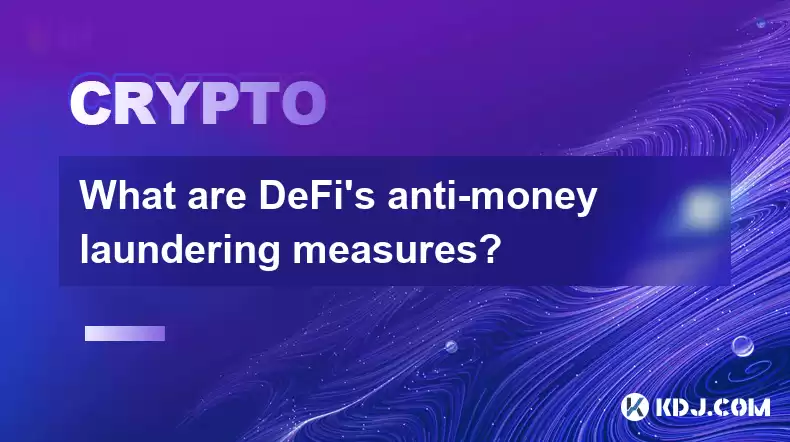
Understanding DeFi's Anti-Money Laundering Measures
Key Points:
- DeFi platforms utilize decentralized and pseudonymized transactions, posing unique challenges for AML compliance.
- Regulatory bodies are stepping up efforts to enforce AML regulations within the DeFi space.
- Various approaches and technologies are employed to combat money laundering in DeFi, including:
Decentralized AML Solutions
Decentralized Exchanges (DEXes):
- Utilize automated market makers (AMMs) to facilitate peer-to-peer trading, reducing the need for intermediaries and enhancing anonymity.
- Some DEXes implement Know-Your-Customer (KYC) protocols for identity verification, while others remain non-custodial.
- Traceability of transactions is limited on DEXes, making it more challenging to track illicit funds.
Anonymity-Preserving Networks:
- Mixing services and privacy coins, such as Monero, provide users with complete anonymity, hindering transaction tracing.
- These technologies can facilitate money laundering by obscuring the source and destination of funds.
Smart Contracts:
- Used to automate and execute transactions based on predetermined conditions.
- AML-focused smart contracts can be implemented to flag and reject suspicious transactions, enhancing visibility.
Blockchain Analysis Tools:
- Leverage advanced algorithms and data analysis techniques to assess transaction data and identify potential money laundering patterns.
- These tools can be used by regulators and law enforcement agencies to investigate illicit activities.
Regulatory Compliance in DeFi
Government Regulations:
- Various jurisdictions are developing and implementing AML frameworks specifically tailored to the DeFi sector.
- Regulations may include requirements for customer identification, transaction monitoring, and reporting of suspicious activities.
Self-Regulation:
- DeFi industry associations are working to establish best practices and self-regulatory standards to address AML concerns.
- Self-regulation can foster transparency, reduce regulatory uncertainty, and ensure compliance with AML requirements.
Know-Your-Customer (KYC) and Identity Verification
Centralized KYC Solutions:
- Certain DeFi platforms, primarily those offering custody or fiat on-ramps, implement centralized KYC procedures to identify users and comply with AML regulations.
- KYC processes involve verifying customer identification documents and collecting personal information.
Decentralized KYC Solutions:
- Emerging technologies, such as decentralized identity platforms, aim to provide AML compliance without sacrificing user anonymity.
- These solutions use cryptographic techniques to verify user identities while maintaining privacy.
Transaction Monitoring and Analysis
Transaction Monitoring:
- DeFi platforms can implement real-time transaction monitoring systems to identify suspicious activities and flag potentially illicit transactions.
- Red flags include large, inconsistent transfers, unusual patterns, and interactions with known illicit actors.
AI-Powered Analytics:
- Advanced analytics tools use artificial intelligence and machine learning algorithms to detect money laundering patterns and anomalies.
- These tools can enhance the accuracy and efficiency of transaction monitoring.
Forensic Investigations:
- Law enforcement and regulatory agencies utilize forensic analysis techniques to investigate illicit activities in DeFi.
- Forensic analysis involves examining blockchain data, identifying patterns, and tracing the flow of funds.
FAQs
Q: How effective are DeFi's anti-money laundering measures?
A: The effectiveness of DeFi's AML measures varies depending on the specific approach and implementation. Decentralized solutions offer some degree of anonymity but pose challenges for tracking illicit funds. Regulatory compliance and KYC procedures enhance transparency and compliance, while transaction monitoring and analysis provide tools to identify suspicious activities.
Q: What are the challenges in implementing AML measures in DeFi?
A: Challenges include maintaining user anonymity while ensuring compliance, balancing privacy concerns with regulatory requirements, and adapting to rapidly evolving technologies and anonymity-preserving mechanisms in the DeFi ecosystem.
Q: How can DeFi adapt to evolving money laundering techniques?
A: Continuous innovation in AML technologies and regulatory frameworks is crucial to keep pace with evolving money laundering techniques. Collaboration between DeFi platforms, regulators, and law enforcement agencies is key to addressing emerging threats and safeguarding the integrity of the DeFi ecosystem.
Disclaimer:info@kdj.com
The information provided is not trading advice. kdj.com does not assume any responsibility for any investments made based on the information provided in this article. Cryptocurrencies are highly volatile and it is highly recommended that you invest with caution after thorough research!
If you believe that the content used on this website infringes your copyright, please contact us immediately (info@kdj.com) and we will delete it promptly.
- Crypto ETFs and Altcoins: Navigating the Wild West with Meme Coins and Tokenized Assets
- 2025-07-27 23:04:06
- Pi Coin in 2026: Will It Be Worth the Wait?
- 2025-07-27 23:10:12
- Dogecoin Price Prediction: Bullish W Pattern Sparks Hope for $1 DOGE
- 2025-07-27 23:15:21
- Bitcoin Price, Portfolio Growth, and the Remittix Alternative: Navigating the Crypto Landscape
- 2025-07-27 23:04:06
- Cryptos to Watch in 2025: Punisher Coin, Chainlink, and the Altcoin Arena
- 2025-07-27 18:30:13
- Bitcoin, Altcoins, Rebound: Navigating the Crypto Comeback Trail
- 2025-07-27 18:30:13
Related knowledge
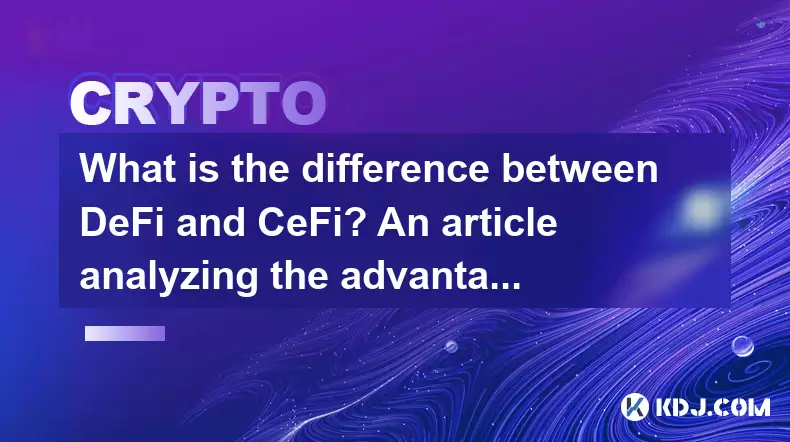
What is the difference between DeFi and CeFi? An article analyzing the advantages and disadvantages of both
Jun 13,2025 at 03:57am
Understanding the Foundations of DeFi and CeFiTo fully grasp the difference between DeFi (Decentralized Finance) and CeFi (Centralized Finance), it’s ...
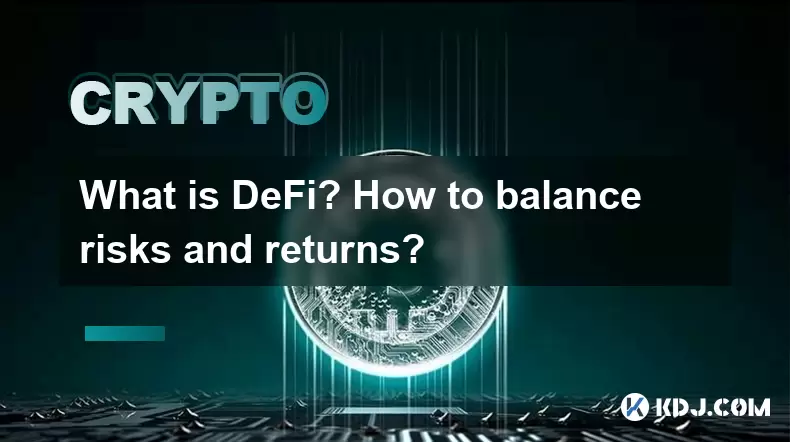
What is DeFi? How to balance risks and returns?
May 31,2025 at 12:22pm
What is DeFi? How to Balance Risks and Returns? Decentralized Finance, commonly known as DeFi, represents a revolutionary shift in the financial ecosy...
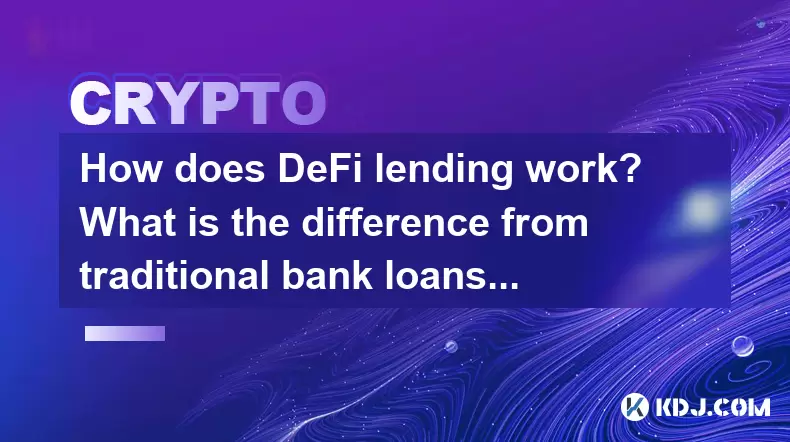
How does DeFi lending work? What is the difference from traditional bank loans?
May 29,2025 at 05:36pm
Introduction to DeFi LendingDeFi lending, or decentralized finance lending, represents a revolutionary shift in the way borrowing and lending are cond...
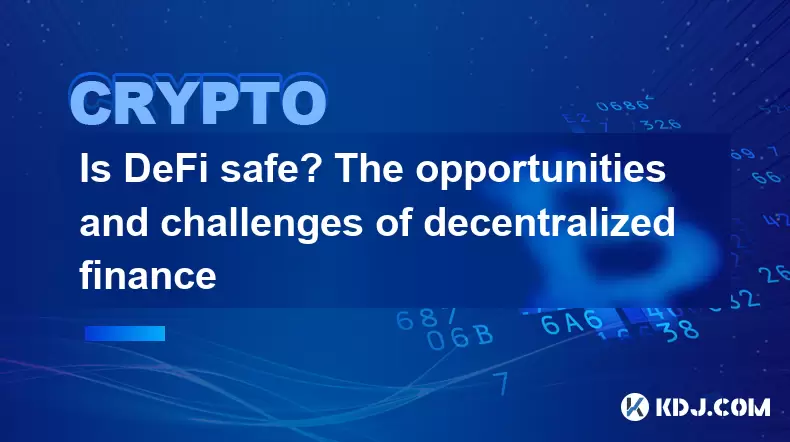
Is DeFi safe? The opportunities and challenges of decentralized finance
May 27,2025 at 02:28pm
Decentralized Finance, commonly known as DeFi, has revolutionized the financial landscape by offering a range of financial services without the need f...

DeFi Mining Tutorial: How to Maximize Profits and Reduce Risks?
May 27,2025 at 07:42am
DeFi, or Decentralized Finance, has opened up a new world of opportunities for crypto enthusiasts looking to maximize their profits through various mi...
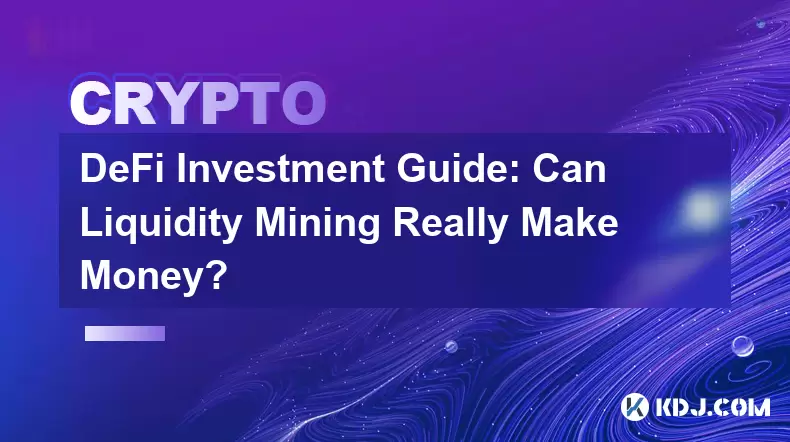
DeFi Investment Guide: Can Liquidity Mining Really Make Money?
May 28,2025 at 10:18am
Introduction to Liquidity Mining in DeFiLiquidity mining has emerged as a popular method for earning passive income within the decentralized finance (...

What is the difference between DeFi and CeFi? An article analyzing the advantages and disadvantages of both
Jun 13,2025 at 03:57am
Understanding the Foundations of DeFi and CeFiTo fully grasp the difference between DeFi (Decentralized Finance) and CeFi (Centralized Finance), it’s ...

What is DeFi? How to balance risks and returns?
May 31,2025 at 12:22pm
What is DeFi? How to Balance Risks and Returns? Decentralized Finance, commonly known as DeFi, represents a revolutionary shift in the financial ecosy...

How does DeFi lending work? What is the difference from traditional bank loans?
May 29,2025 at 05:36pm
Introduction to DeFi LendingDeFi lending, or decentralized finance lending, represents a revolutionary shift in the way borrowing and lending are cond...

Is DeFi safe? The opportunities and challenges of decentralized finance
May 27,2025 at 02:28pm
Decentralized Finance, commonly known as DeFi, has revolutionized the financial landscape by offering a range of financial services without the need f...

DeFi Mining Tutorial: How to Maximize Profits and Reduce Risks?
May 27,2025 at 07:42am
DeFi, or Decentralized Finance, has opened up a new world of opportunities for crypto enthusiasts looking to maximize their profits through various mi...

DeFi Investment Guide: Can Liquidity Mining Really Make Money?
May 28,2025 at 10:18am
Introduction to Liquidity Mining in DeFiLiquidity mining has emerged as a popular method for earning passive income within the decentralized finance (...
See all articles

























































































